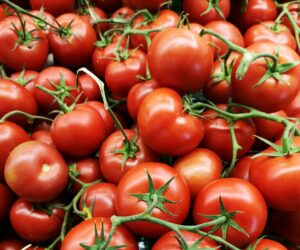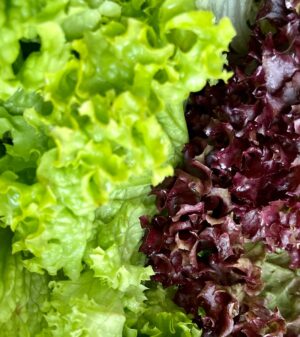Slowed growth forecast for US vegetable production through 2033
U.S. production of vegetables and pulse crops is projected to grow just 4% from 2022 to 2033, according to the USDA’s recently released long-term outlook report.
The growth, slower than the past decade, reflects rising import competition and technical measurement issues surrounding the rapid growth of greenhouses and urban vertical farms, according to the report. The protected culture subsector, which is gradually replacing field-grown production for several major fresh vegetables, is still not well-represented in traditional USDA data collection programs, according to the agency.
The total combined farm value of fruit, tree nuts, vegetables and pulse crop production is projected to reach $60 billion by 2033, up from $54 billion in 2022. By 2033, the value of fruit (citrus and noncitrus) will represent 41% of the total value of the category, tree nuts approximately 1%, and all vegetable and pulse crops roughly 44%, according to the USDA.

Combined production of fruit, tree nuts, vegetables and pulses is projected to grow slightly over the next decade, reaching 173 billion pounds by 2033, up from 166 billion in 2022. By 2033, fruit is projected to contribute 24% of the total output, tree nuts approximately 5%, and all vegetable and pulse crops roughly 71%.
The report forecasts a 14% decrease in total U.S. agricultural exports in 2024, or a drop to $169.5 billion from a record $196.1 billion in 2022. A “broad range of commodities” will see declines, according to the report, led by reductions in corn, soybeans and cotton.
Agricultural imports are forecast to post a record $200.0 billion in 2024 before slowing. The 2024 projection is up from the previous record of $195.4 billion in 2023 and driven by strong imports of the combined livestock, dairy and poultry category, processed grain products, sugar and tropical products, and horticultural products (especially fresh fruits and vegetables).
Vegetable breakdown
The vegetable category is split into five main groups: fresh, processing, potatoes, pulses and mushrooms.
 Fresh-market vegetable production share is projected to decline from 32% in 2022 to 30% of vegetable production through 2033 as imports are expected to largely fill stronger demand through 2033. Processing vegetable production will remain steady around 29% over the 10-year period based largely on steady processing tomato output.
Fresh-market vegetable production share is projected to decline from 32% in 2022 to 30% of vegetable production through 2033 as imports are expected to largely fill stronger demand through 2033. Processing vegetable production will remain steady around 29% over the 10-year period based largely on steady processing tomato output.
Potatoes are projected to account for 35% of vegetable production by 2033, up 1% from 2022, while pulse crops are projected to remain steady at 4%.
Despite increasing production of higher-priced vegetables such as romaine lettuce, broccoli and organic vegetables, the value of fresh-market vegetable production, including melons, is projected to decrease by 11% between 2022–33 as price pressure continues from strong import growth. The production value for fresh market vegetables will account for a 57% share of vegetable and pulse receipts by 2033, down from 62 percent in 2022, according to the report.

Key fresh-market vegetable production over the next 10 years includes lettuce, melons, onions, carrots and sweet potatoes. Within the lettuce subsector, steady growth is projected in romaine and field-grown leaf production while iceberg output declines. Field-grown iceberg lettuce share is expected to be limited by rising protected culture output and rising popularity of romaine lettuce. Production of onions is expected to remain steady.
Vegetables for processing currently account for about one-third of annual vegetable and pulse output. Tomato production, which accounted for 62% of processing vegetable production in 2022, is projected to increase to 66% by 2033, though processing tomato production is expected to fall during the next decade as yields drop and planted acres stabilize.
Potatoes are expected to account for 20% of vegetable farm value by 2033, a 1% increase from 2022. Projected potato production will increase 8% while value rises 3% over the 2022–33 baseline, according to the report.
Planted acres are forecast to decrease slightly in 2024, but total planted acres in the top 13 potato-producing states are forecast to remain flat through 2033. The long-term potato forecast assumes average weather and adequate water supplies, an upward yield trend and steady demand in the U.S. and abroad for processed potatoes.
Commercial domestic mushroom production is forecast to decline slightly in the next decade.
Domestic demand, limited export growth and rising productivity per acre have contributed to a slower rise in prices for vegetables used for processing compared to fresh market prices, according to the USDA. Comparing average price trends from 2022–2024 and 2031–2033, nominal processing vegetable prices are expected to rise about 14%, while constant dollar prices will drop 6%.
The full outlook is available here (.pdf).







